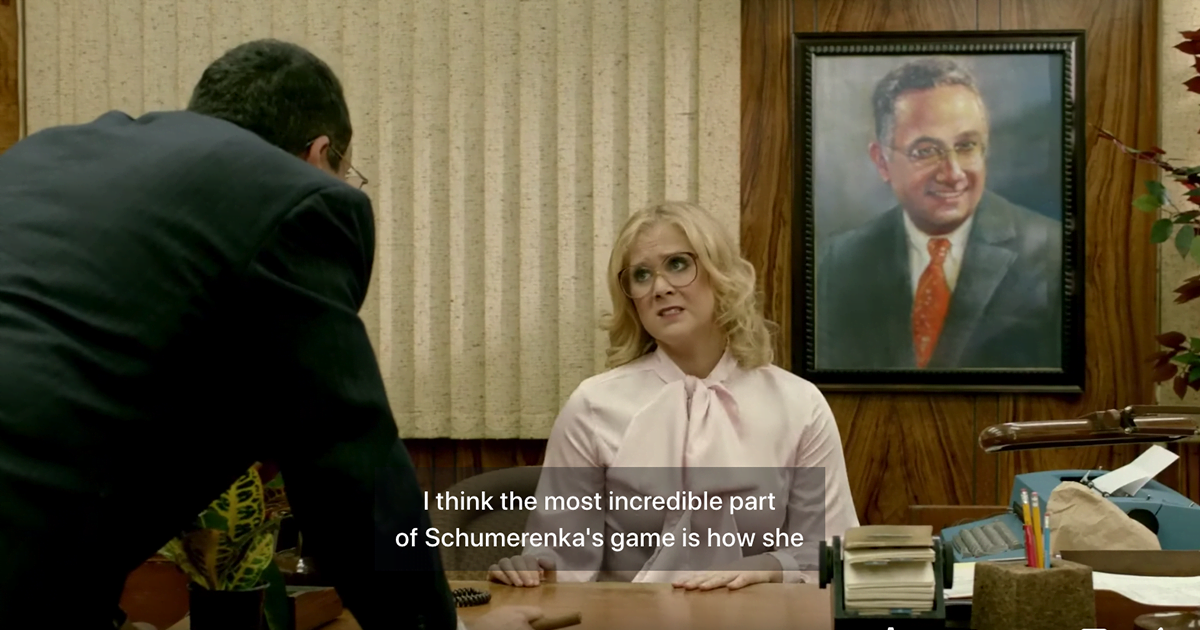Make Your Digital Content Accessible: What You Need to Know About Accessibility

Explore the world of content accessibility as we break down what it means, why it matters, and how you can ensure your digital content is inclusive for all users.
What exactly is accessible content? What makes content accessible? Why does content accessibility matter, and how can you make your content accessible? As we celebrate Global Accessibility Awareness Day, we want to spotlight the importance of making online content accessible to all. Whether you’re scrolling through your favourite brand’s Instagram page or keeping up with the latest posts on your go-to blog, the wealth of information available at your fingertips is undeniable—but not everyone can access this content with the same ease..
Consider the disabilities that impact accessibility. Making sure your content is accessible is crucial for allowing people with disabilities to access and comprehend digital content. In the offline world, accommodations such as ramps and automatic door openers can make life more accessible for people with mobility disabilities. Similarly in the digital world, features such as screen readers and simple layouts can help individuals navigate digital content. For a person with dyslexia, for example, clearly-written text and readable fonts can ease their struggle with reading. Recognizing the needs of people with disabilities is key to making content accessible and building an online space where everyone is included.
What Makes Content Accessible?
Simply put, accessible content is about making sure everyone can access and understand your digital content, regardless of any disabilities they might have, such as hearing impairment, visual processing disorders, and visual impairments. This could look like:
- adding captions to videos
- including transcripts for audio content
- using high contrast between text and background to enhance readability, or
- making sure your website and digital platforms are compatible with screen readers.
Ensuring that everyone can easily access your content is crucial, no matter where you’re sharing it, whether on your website, in videos, or on social media.
Make your website accessible and welcoming for everyone
Your website should be a welcoming and accessible environment for all visitors. This involves incorporating clean and simple coding techniques to ensure that screen readers and other assistive tools can smoothly navigate through your site. Offering keyboard navigation alternatives is crucial for individuals who encounter challenges using a mouse. Prioritizing these accessibility elements ensures that your website caters to a broader audience, creating an online experience that is inclusive for everyone who interacts with your site.
Build accessibility into your video content
Videos are a great way to connect with your audience, and there are many ways to make your videos more accessible:
- Include closed captions to support people who are deaf or hard of hearing, allowing them to follow the video without audio (and most hearing people scroll through their social feeds with the sound off anyway).
- Consider incorporating audio descriptions into your videos (descriptive video). These descriptions verbally explain visual elements, making the content understandable for users who are blind or visually impaired. This might mean an additional audio track, or building visual descriptions directly into your video script for a more seamless experience.
- Provide a transcript, offering viewers an alternative way to engage with the content, particularly those who prefer reading or have difficulty accessing audio or video content.
Integrating these accessibility features ensures that your videos are inclusive and accessible to a wider audience.
While often confused for one another, closed captions are not the same as subtitles. Closed captions show what people are saying and describe sounds for viewers who are deaf or hard of hearing. When you’re adding captions to videos, there are two options: burned-in captions or SRT (SubRip) captions. Burned-in captions are a permanent feature, part of the video image. They can’t be turned off, and if there’s an error in the text, you can’t correct it without going back to your video editor, making the changes, and then reposting the video. SRT captions let you update and correct errors, and on some platforms include custom captions in different languages, but you have less control over how they look. No matter which option you go for, it’s important to have real people double-check and correct the captions. Having human editors review and revise them ensures that everyone can easily enjoy your content.
Social Media content can be accessible, too
Now, on to social media. This is where a lot of your audience interactions happen, so let’s maximize your reach by making your content inclusive and accessible:
- When sharing images, take a moment to add descriptive captions that provide context and make the content understandable to everyone, regardless of their disability or condition.
- Add captions (closed or burned in) to your videos to ensure that all users can fully engage with the content.
- Make sure your links are clear and descriptive, so users know what to expect when they click.
And don’t forget to explore the accessibility features on each platform – they’re there to help you make your content more inclusive and accessible to everyone.
Is your branding accessible?
Highlighting the importance of content accessibility extends beyond just the web, video, and social media phases; it's a critical aspect of brand development as well. A professional design agency will likely have considered this when they created your logo, brand colours, and brand guidelines. But sometimes things get missed. Here are some potential accessibility gaps to look for:
- Do your brand colours have enough contrast? A lack of contrast in a brand’s colour palette is something we see too often. This makes it harder to make websites, graphics, and videos accessible to people with low vision.
- Is the font you use for digital and printed communications (display ads, infographics, newsletters) clear and easy to read?
Designing your brand’s visual style with accessibility in mind and Incorporating accessibility considerations into your style guide from the beginning makes it easier to create inclusive, accessible content across all your digital (and analog) channels. And not having an accessible style guide can cause delays and re-work in website designs and other content creation, driving up costs.
Why Content Accessibility Matters: Let’s Break It Down?
Accessibility, like gravity, isn’t just a good idea: It’s the law.
Incorporating design elements that enhance readability, usability, and inclusivity is not just a good idea – it’s a responsibility. In Canada, legal frameworks like the Accessibility for Ontarians with Disabilities Act (AODA) and the Canadian Human Rights Act mandate accessibility for websites, especially those with large user bases. Compliance isn’t just about adhering to regulations; it’s about ensuring that people with disabilities can fully engage with the content. Every decision you make should be geared towards making digital experiences more accessible to everyone. Closed captions for videos, transcripts for audio, and intuitive keyboard accessibility are just a few examples of practices that prioritize inclusivity.
Neglecting accessibility doesn't only hurt users; it also adversely affects content creators and website owners. Did you know that approximately 16% of the population lives with a disability? This includes visible and nonvisible conditions. That’s about 1.3 billion people or 1 in 6 of us. Therefore, not considering accessibility translates to overlooking a substantial audience.
6 Ways to Make Your Content More Accessible
By making content accessible across different platforms, we not only expand our reach but also foster a digital environment where everyone feels welcome and valued. But how do you ensure your content is accessible? Here are a few practical tips anyone can integrate, no matter their level of tech-know-how:
- Be descriptive: Use Alt Text for images so screen readers can describe them to users who might have a hard time seeing them.
- Caption it: Add closed captions to your videos. Platforms like YouTube, Facebook, Instagram, and TikTok can all give you a head start with automatically generated captions that you can edit for accuracy.
- Ensure your website content is keyboard-friendly: Make sure all your interactive elements can be accessed and used with just a keyboard.
- Colours: Pick colours with enough contrast so that everyone can easily read your content. High contrast helps readability for all users, including those with visual impairments. No matter what the project, we love using contrast colour checkers to meet accessibility standards and ensure our content is inclusive to a diverse audience.
- Test out your content: There are various tools out there to help you check your content accessibility, from online validators to colour contrast checkers.
- Use CamelCase (CamelCaps) formatting for hashtags: Capitalize the first letter of each word within the hashtag, such as #GlobalAccessibilityAwareness or #SocialMediaMarketing. This format makes multi-word hashtags easier for many people to understand, particularly those with learning disabilities or individuals whose first language isn’t English. It can make it easier for users to interpret the intended meaning behind the hashtag, ultimately improving inclusivity and accessibility. Added bonus: it’s easier for the screen reading programs used by blind or partially-sighted persons.
As the digital world progresses, it's important to ensure your content is accessible to all. Prioritizing inclusivity in your online content isn't just about meeting legal requirements; it's about ensuring that everyone has equal access to information. Accessibility shouldn't be an add-on but a part of the foundation of your online presence.
Accessibility resources:
Colour contrast checkers: https://www.tpgi.com/color-contrast-checker/
https://webaim.org/resources/contrastchecker/
PDF accessibility checker: https://access-for-all.ch/en/home/
Website evaluation accessibility tool: https://wave.webaim.org/
Colour blindness simulator: https://www.color-blindness.com/coblis-color-blindness-simulator/
Braille translator: https://www.brailletranslator.org/
Talk to text translator: https://app-t2s.web.app/
Accessibility coding standards: https://developer.wordpress.org/coding-standards/wordpress-coding-standards/accessibility/
Web content accessibility guidelines: https://en.wikipedia.org/wiki/Web_Content_Accessibility_Guidelines#:~:text=The%20Web%20Content%20Accessibility%20Guidelines,standards%20organization%20for%20the%20Internet
Accessibility checker (built into Google’s page speed checker): https://pagespeed.web.dev/
Written by Jessica Mendoza (she/her), Digital & Social Media Specialist at Innovate By Day.
- Share on Linkedin
- Share on Facebook
- Share on Twitter
Share this blog
- contrast checker
- website accessibility
- Social Media
- accessibility
- accessibility compliance
- Closed Captions
- content accessibility
- digital content
- video content
Related Posts

Make Your Digital Content Accessible: What You Need to Know About Accessibility
Posted on Thursday May 16, 2024 by Jessica Mendoza
Debunking Marketing Myths
Posted on Monday April 22, 2024 by Jessica Mendoza
Social Media Marketing Predictions 2024: Embracing the Future While Maintaining the Classics
Posted on Thursday January 18, 2024 by Jessica Mendoza
Embracing the Future: The Impact of Artificial Intelligence in Digital Marketing
Posted on Tuesday November 7, 2023 by Jessica Mendoza
Exploring the Top Twitter Alternatives in 2023
Posted on Friday July 14, 2023 by Jessica Mendoza
Social Media During Black History Month
Posted on Thursday February 23, 2023 by Selina McCallum
What to do when the hate comments start rolling in?
Posted on Wednesday October 12, 2022 by Teagan Lisson
Inside Social Media: when accessibility compliance becomes a quality assurance and customer service fail
Posted on Wednesday April 6, 2022 by James Woods
Get your brand marketing on track
Posted on Wednesday November 17, 2021 by James Woods
Your website: is it working for you?
Posted on Friday November 5, 2021 by James Woods
Three keys to building an audience on Social Media: Consistency, Consistency, and Consistency.
Posted on Thursday August 19, 2021 by Teagan Lisson

